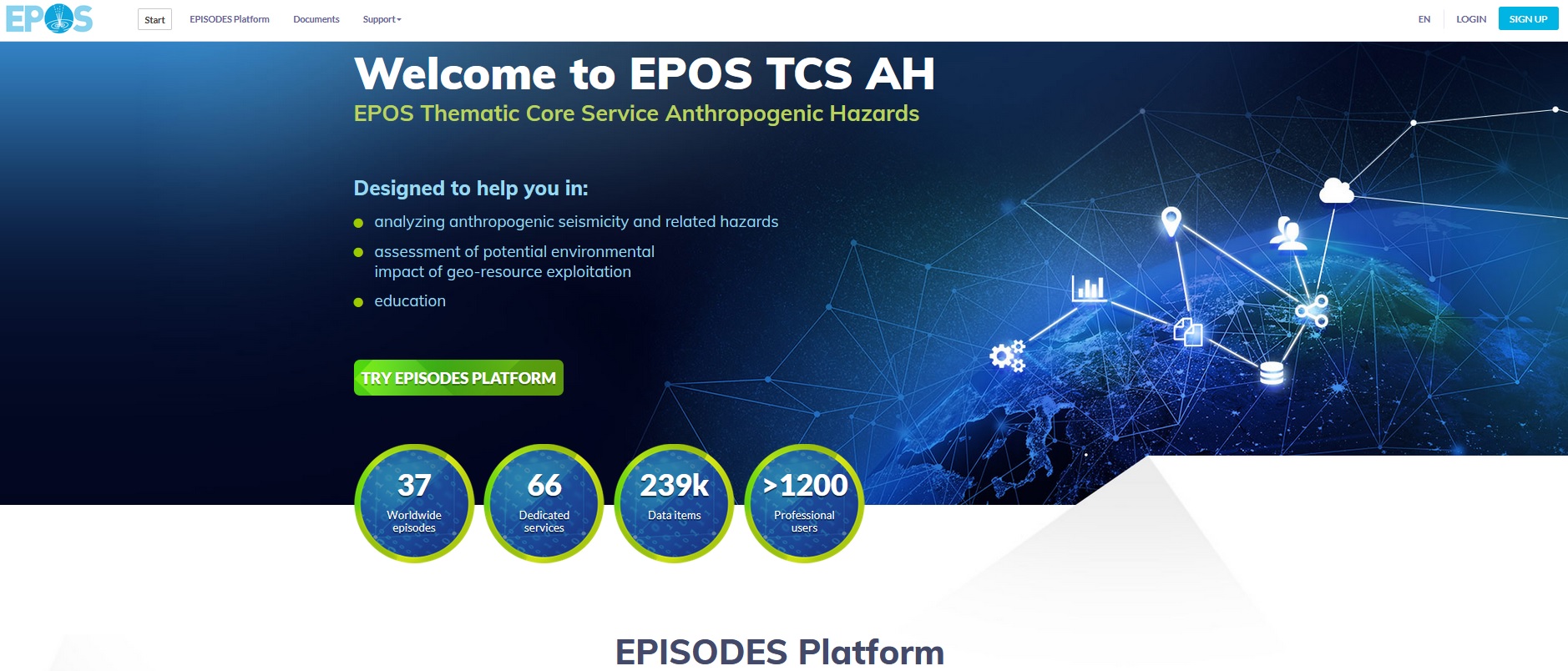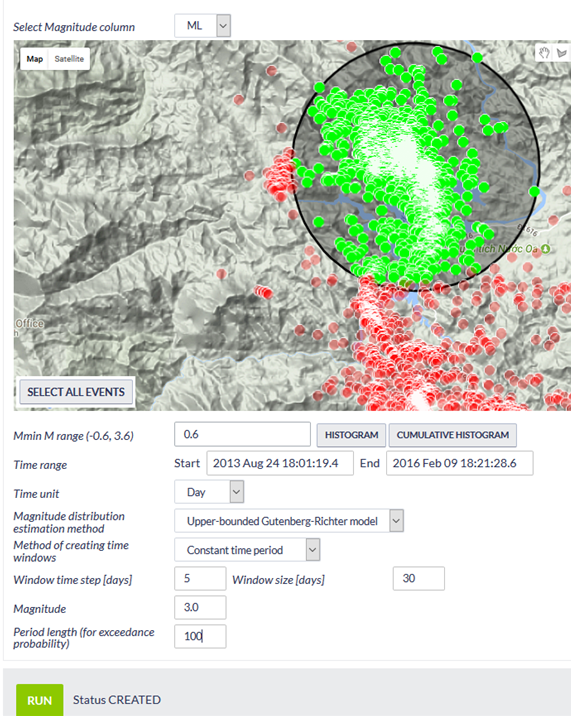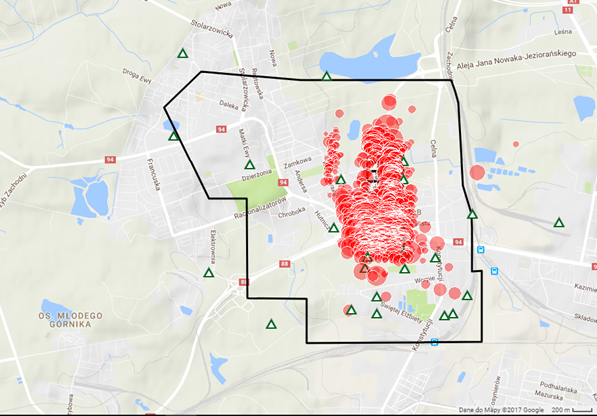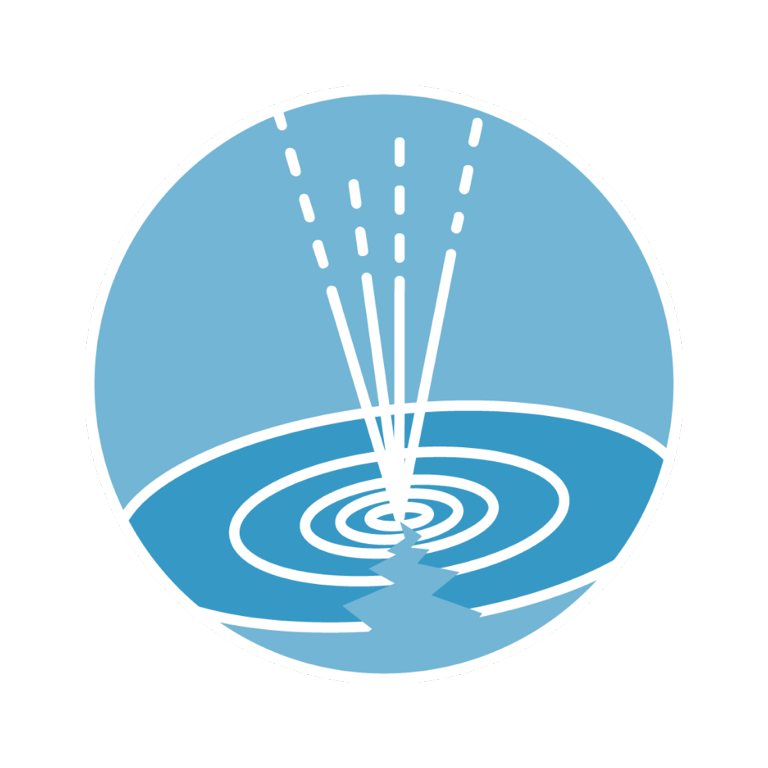The Thematic Core Service Anthropogenic Hazards provides an innovative and accessible digital environment to enable research into anthropogenic hazards related to the exploration and exploitation of geo-resources via the EPISODES Platform.

EPISODES Platform
The EPISODES (European Plate Induced Seismicity Observations & Datasets within EPOS Services) Platform is a virtual laboratory that provides numerous team-working features to facilitate collaborative scientific research, make the dissemination of knowledge easier, and public participation possible through citizen science applications. It can also be used as a teaching tool on anthropogenic hazards related to the exploitation of geo-resources.
Episodes
Inside the infrastructure, data and products are grouped into “episodes.” Each episode integrates seismic and industry data, supplementing it with additionally available geo-data, such as geological, geophysical, tectonic, geomechanical, and geodetic.
Episodes aid researchers to establish correlations between induced or triggered geophysical processes and human activities for georesource exploration.
Applications
The open-access episodes are processed using the implemented software packages, or “applications”. The available problem-oriented “applications” allow researchers to investigate the links between technology, geophysical responses, and any resultant hazard.
Workspaces
Users can predefine and upload data subsets to their personal workspaces, and simulate multi-hazards incidents. In addition, the platform allows for episode-oriented research (applying various methodologies in a specific episode) or method-oriented research (performing a single methodology in several datasets).
Altogether, the TCS-AH infrastructure allows researchers to share their analysis and work with others to assess the seismic risk and other hazards of geo-resources exploitation.
- Use Case Examples
-
Time-dependent Seismic Hazard Analysis
This application can evaluate the temporal evolution of the seismic hazard parameters to detect a causative relationship between seismic events and industrial activity. On a mining episode, it can allow the analysis of the causative relationship between seismic events and the advance of the mining front and allow hazard parameters to be estimated including the activity rate, the Gutenberg-Richter b value, the return period and the exceedance probability of a prescribed magnitude for selected seismic time windows related with the advance of the mining front.
Two options are available for creating time windows: Constant time period (duration of dataset) and constant event number (dataset size). The spatial constraints are set by defining a specified circular, rectangular or polygonal area. Four magnitude distribution estimation methods are supported. Hazard parameters are calculated and plotted for each one of the time windows for which sufficient data are available. A result of time-dependent hazard parameters in a mining environment is shown here with the episode data.


